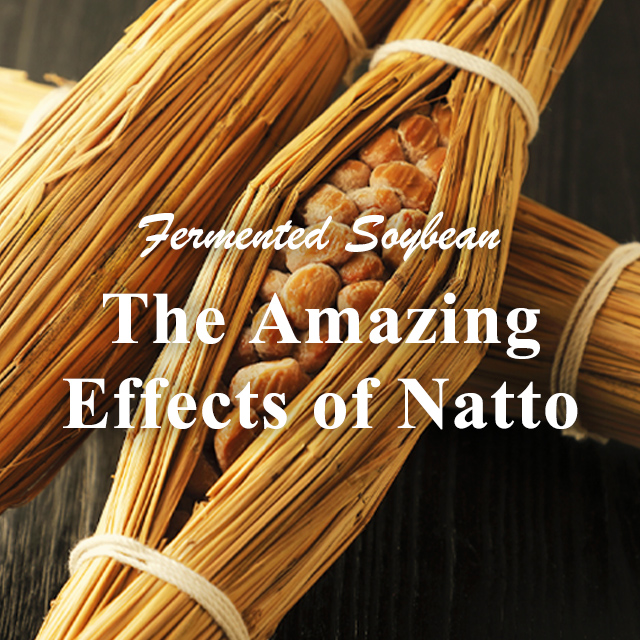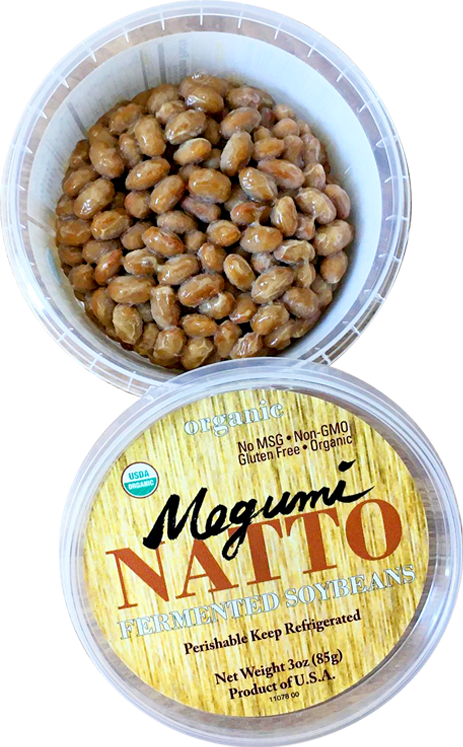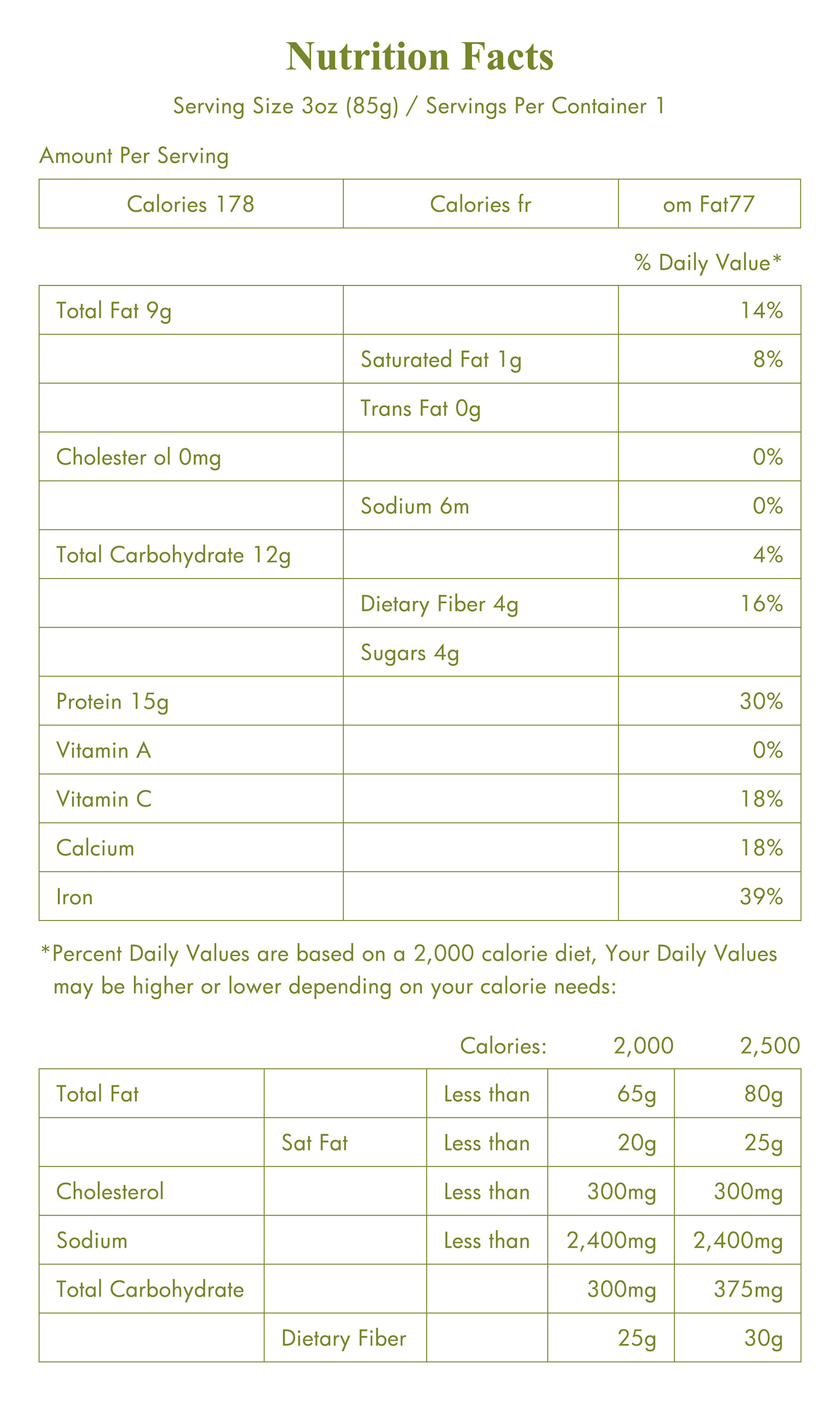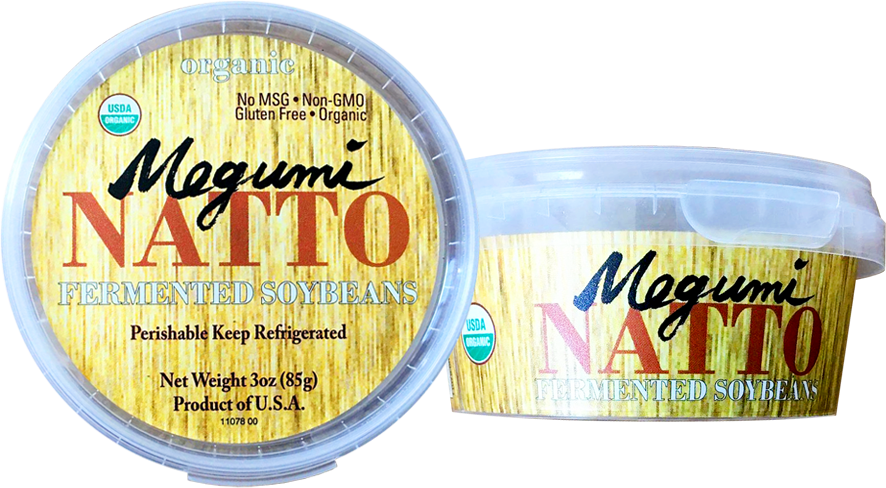

Megumi Natto is manufactured in Sonoma County in California,
using the traditional Japanese method of fermenting soybeans.
On top of which, each individual packet of natto is lovingly handmade, using only carefully selected materials.
Japan is one of the top 10 countries with the longest average life expectancy of its population.
One of the most important reasons for that is said to be related to Japanese cuisine, specifically,
soy-based products such as tofu and natto.
Soybeans are a versatile ingredient, used to make a variety of different foods prevalent in both Japanese and Western cuisine.
Fermented soybeans, also known as “natto” in Japanese culture, are particularly healthy and also aid in digestion.
The health benefits of natto make it a superfood, and it likely contributes to the longevity of the Japanese people.
using the traditional Japanese method of fermenting soybeans.
On top of which, each individual packet of natto is lovingly handmade, using only carefully selected materials.
Japan is one of the top 10 countries with the longest average life expectancy of its population.
One of the most important reasons for that is said to be related to Japanese cuisine, specifically,
soy-based products such as tofu and natto.
Soybeans are a versatile ingredient, used to make a variety of different foods prevalent in both Japanese and Western cuisine.
Fermented soybeans, also known as “natto” in Japanese culture, are particularly healthy and also aid in digestion.
The health benefits of natto make it a superfood, and it likely contributes to the longevity of the Japanese people.


There is evidence that Natto was already being produced at the end of the Jomon period
(around 1000 BC). Also, the book “Honchoushokukan” which translates as “The Breakfast
Book”, written in the early Edo period (1603 ~ 1868), describes the intestinal regulation and
detoxification effects of natto.
So, it appears that people have been aware of the health benefits of natto since way back in
Japanese history.
However, it wasn’t until the end of World War II that natto became popular among Japanese
people.
The head of nutrition at GHQ (General Headquarters, the Supreme Commander for the Allied
Powers) was heartbroken by the starved appearance of Japanese people, who were suffering
from malnutrition and food shortages caused by the war.
The GHQ encouraged Japanese people to eat more of the cheap and nutrient rich natto with
the support of the Japanese government.
Fast-forwarding to 1980, the enzyme "nattokinase" was identified by scientists in natto.
This enzyme was found to be helpful in supporting healthy heart function.
Due to these findings, natto has become better known as a health food and the enzyme
“nattokinase” can even be found in some herbal remedies and supplements. There is evidence that Natto was already being produced at the end of the Jomon period (around 1000 BC). Also, the book “Honchoushokukan” which translates as “The Breakfast Book”, written in the early Edo period (1603 ~ 1868), describes the intestinal regulation and detoxification effects of natto.
So, it appears that people have been aware of the health benefits of natto since way back in Japanese history.
However, it wasn’t until the end of World War II that natto became popular among Japanese people.
The head of nutrition at GHQ (General Headquarters, the Supreme Commander for the Allied Powers) was heartbroken by the starved appearance of Japanese people, who were suffering from malnutrition and food shortages caused by the war.
The GHQ encouraged Japanese people to eat more of the cheap and nutrient rich natto with the support of the Japanese government.
Fast-forwarding to 1980, the enzyme "nattokinase" was identified by scientists in natto.
This enzyme was found to be helpful in supporting healthy heart function.
Due to these findings, natto has become better known as a health food and the enzyme “nattokinase” can even be found in some herbal remedies and supplements.
(around 1000 BC). Also, the book “Honchoushokukan” which translates as “The Breakfast
Book”, written in the early Edo period (1603 ~ 1868), describes the intestinal regulation and
detoxification effects of natto.
So, it appears that people have been aware of the health benefits of natto since way back in
Japanese history.
However, it wasn’t until the end of World War II that natto became popular among Japanese
people.
The head of nutrition at GHQ (General Headquarters, the Supreme Commander for the Allied
Powers) was heartbroken by the starved appearance of Japanese people, who were suffering
from malnutrition and food shortages caused by the war.
The GHQ encouraged Japanese people to eat more of the cheap and nutrient rich natto with
the support of the Japanese government.
Fast-forwarding to 1980, the enzyme "nattokinase" was identified by scientists in natto.
This enzyme was found to be helpful in supporting healthy heart function.
Due to these findings, natto has become better known as a health food and the enzyme
“nattokinase” can even be found in some herbal remedies and supplements. There is evidence that Natto was already being produced at the end of the Jomon period (around 1000 BC). Also, the book “Honchoushokukan” which translates as “The Breakfast Book”, written in the early Edo period (1603 ~ 1868), describes the intestinal regulation and detoxification effects of natto.
So, it appears that people have been aware of the health benefits of natto since way back in Japanese history.
However, it wasn’t until the end of World War II that natto became popular among Japanese people.
The head of nutrition at GHQ (General Headquarters, the Supreme Commander for the Allied Powers) was heartbroken by the starved appearance of Japanese people, who were suffering from malnutrition and food shortages caused by the war.
The GHQ encouraged Japanese people to eat more of the cheap and nutrient rich natto with the support of the Japanese government.
Fast-forwarding to 1980, the enzyme "nattokinase" was identified by scientists in natto.
This enzyme was found to be helpful in supporting healthy heart function.
Due to these findings, natto has become better known as a health food and the enzyme “nattokinase” can even be found in some herbal remedies and supplements.

Eat natto to boost your immunity
An important bacteria in the production of natto, Bacillus Subtilis, the “natto bacteria”,can be found throughout Japan, such as in rice straw, dry grass and even in the soil.
Traditionally, natto was made by wrapping soybeans in rice straw and waiting for it to ferment. However, in the beginning of the 20th century,
the Bacillus Subtilis bacteria was identified and isolated by scientists, resulting in a much simpler fermentation process.
The reason that natto may boost your immunity is because many nutrients vital to our health,
such as polyamine, nattokinase, vitamin k2 and polyglutamic acid, are produced during fermentation.
Particularly, the natto bacteria itself,
as well as the polyglutamic acid and a naturally occurring fructan called levan may contribute to boosting your immunity. An important bacteria in the production of natto,
Bacillus Subtilis, the “natto bacteria”,
can be found throughout Japan, such as in rice straw,
dry grass and even in the soil.
Traditionally, natto was made by wrapping soybeans
in rice straw and waiting for it to ferment. However,
in the beginning of the 20th century, the Bacillus
Subtilis bacteria was identified and isolated by
scientists,
resulting in a much simpler fermentation process.
The reason that natto may boost your immunity is
because many nutrients vital to our health,
such as polyamine, nattokinase,
vitamin k2 and polyglutamic acid, are produced during
fermentation.
Particularly, the natto bacteria itself,
as well as the polyglutamic acid and a naturally
occurring fructan called levan may contribute to
boosting your immunity.
Adjusting the intestinal environment
Natto is rich in dietary fiber, so the natto bacteria can reach your intestines without being completely destroyed by your stomach acid.Due to the fact that natto is also compatible with the lactic acid already in your body,
as well as having probiotics present, it is not surprising that natto benefits your intestinal environment. Natto is rich in dietary fiber, so the natto bacteria can
reach your intestines without being completely
destroyed by your stomach acid.
Due to the fact that natto is also compatible with the
lactic acid already in your body,
as well as having probiotics present, it is not surprising
that natto benefits your intestinal environment.
Rich in polyamines
Polyamines are substances which are synthesized from amino acids and are essential for cell growth.Although polyamines can be made within the body itself, this process does slow down with age.
It is also believed that lack of polyamines accelerates your aging process.
Soybeans themselves do contain a large amount of polyamines,
but those can be increased even further by fermenting the soybeans using the natto bacteria. Polyamines are substances which are synthesized from
amino acids and are essential for cell growth.
Although
polyamines can be made within the body itself, this
process does slow down with age.
It is also believed that lack of polyamines accelerates
your aging process.
Soybeans themselves do contain a large amount of
polyamines,
but those can be increased even further by fermenting
the soybeans using the natto bacteria.
Want beautiful skin? Eat natto!
Want beautiful skin?
Eat natto!
Two groups of women between the ages of 40 and 55 took part in a comparativestudy regarding the effects of natto on skin aging.
Many women in the group who ate natto noticed an improvement in their overall skin
condition, including their skin feeling more moisturized and looking more youthful. Two groups of women between the ages of 40 and 55
took part in a comparative study regarding the effects
of natto on skin aging.
Many women in the group who
ate natto noticed an improvement in their overall skin
condition, including their skin feeling more moisturized
and looking more youthful.
Isoflavones
Natto contains a large amount of isoflavones which act similarly to the femalehormone estrogen.
Isoflavones are effective in improving the condition of the skin as well as making us
look more youthful. Natto contains a large amount of isoflavones which act
similarly to the female hormone estrogen.
Isoflavones are effective in improving the condition of
the skin as well as making us look more youthful.
Great nutritional profile
- Natto is a great source of plant-based protein, prebiotics, fiber and is
filled with many other essential vitamins & minerals. - Its main ingredient, soybeans, are rich in protein and one serving has
30% of the Daily Recommended protein intake. - Dietary fiber aids bowel movements by stimulating intestinal walls and
increasing the amount of good intestinal bacteria. - Natto has no added salt, sugars or any chemical preservatives.
- Natto has lots of Vitamin E which helps improve the overall skin
condition. - Vitamin B2 found in natto is needed for the regeneration of cells,
allowing for the growth of healthy skin, hair and nails. - Vitamin K, contained in soybeans, strengthens bones by assisting in bone
formation and helping to prevent calcium loss.
- Natto is a great source of plant-based protein,
prebiotics, fiber and is filled with many other
essential vitamins & minerals. - Its main ingredient, soybeans, are rich in protein
and one serving has 30% of the Daily
Recommended protein intake. - Dietary fiber aids bowel movements by stimulating
intestinal walls and increasing the amount of good
intestinal bacteria. - Natto has no added salt, sugars or any chemical
preservatives. - Natto has lots of Vitamin E which helps improve
the overall skin condition. - Vitamin B2 found in natto is needed for the
regeneration of cells, allowing for the growth of
healthy skin, hair and nails. - Vitamin K, contained in soybeans, strengthens
bones by assisting in bone formation and helping
to prevent calcium loss.


probiotics.
Essential for your health, probiotics also aid digestion and enable your body
to better absorb essential nutrients.
A particular healthy probiotic is used as the fermenting agent in natto.
Along with the probiotics, it also contains a large variety of nutrients,
vitamins, enzymes and amino acids that help with overall health and longevity. Any food that has been fermented is quite healthy as
they contain plenty of probiotics.
Essential for your health, probiotics also aid digestion
and enable your body to better absorb essential
nutrients.
A particular healthy probiotic is used as the fermenting
agent in natto. Along with the probiotics,
it also contains a large variety of nutrients, vitamins,
enzymes and amino acids that help with overall health
and longevity.


